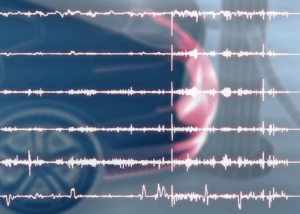Inside Motion AI: How carvaloo’s Damage Detection Revolutionizes Fleet Monitoring

In an industry where every dent, scratch, or undetected collision can result in significant operational costs, carvaloo is redefining how vehicle damage is identified — with carvaloo’s unique Motion AI at the heart of it all. But what is Motion AI exactly?
As key part of our end-to-end damage detection solution introduced in a previous post, the carvaloo Motion AI is not just another telematics feature; it’s an AI-powered, sensor-based system trained on hundreds of millions of kilometers of real driving data. Its job? To recognize damage-causing events — automatically, accurately, and in real-time. In this article, we take you deep under the hood of this technology to understand how carvaloo’s Motion AI works, what makes it unique, and why it’s already changing the game for modern fleet operators.
The Problem: Why Traditional Damage Detection Falls Short
Historically, damage detection has been a manual and delayed process, responding only after damage is visible. Rental cars are returned with dents, commercial vehicles collect minor damages unnoticed, and determining when and where the causal collision has occurred is often guesswork — leading to delays, disputes, and increased costs. Technical solutions such as threshold-based damage detection systems or image-based vehicle scanners are either imprecise or only allow damage to be detected retrospectively.
For fleet managers and mobility providers, the status quo is no longer sustainable. They need a system that doesn’t just react but reliably and proactively identifies damage events, even when no human is watching.
Introducing Motion AI: The Intelligence Behind carvaloo’s Technology
At the core of carvaloo’s platform lies its Motion AI — a proprietary AI engine designed to understand movement on a whole new level. It’s been trained on over 400 million real-world driving kilometers (250 million miles, as of August 2025), making it the most extensively trained damage detection system in the mobility industry.

Unlike conventional crash or damage detection systems that merely react to pre-defined thresholds on acceleration signals, carvaloo’s Motion AI recognizes patterns and behavioral signatures in vehicle motion data. It doesn’t just measure — it interprets.
“Our Motion AI doesn’t just detect movement — it understands it,” says Dr. Sophie Wei, CTO at carvaloo. “We’ve taught our system to differentiate between a pothole and a collision, or between hard braking and an actual damage scenario.”
How It Works: A Peek Under the Hood
At its core, the carvaloo Motion AI has been trained to find patterns in vehicle motion data that were caused by damage events to reliably detect damage in real-time.
Here’s a simplified breakdown of the system:
1. Data Acquisition
The high-resolution IMU sensor (Inertia Measurement Unit with accelerometer and gyroscope) in the telematics device records 6-axis acceleration and gyration of the vehicle with a time resolution of several milliseconds at all times, thus capturing the vehicle dynamics and detailed motion patterns 24/7 — from minor vibrations to sudden impacts.
2. Edge Preprocessing
Raw IMU data is automatically reoriented and normalized on the edge device, thus ensuring consistent interpretation of the motion data independent of how, where, or in which vehicle the sensor is installed. A pre-trained machine learning algorithm then dynamically selects and compresses the data for relevant segments (defined as any state beyond complete vehicle standstill without any disturbances).
3. Cloud Processing
Processed motion data is then transmitted to the cloud in real time over cellular connection provided by the telematics device for advanced analysis. The Motion AI pipeline in the cloud uses deep learning models to extract spatiotemporal features, reconstruct vehicle dynamics, detect anomalies in motion patterns, and identify and classify damage events with high precision.
And all of this happens without human input — or delay.

From Data to Damage: Understanding the Patterns
Imagine a vehicle driving over a speed bump — and then later scratching a parking post. Both result in anomalies in the acceleration data, where the speed bump generates significantly higher spikes and disturbances than the actual damage event, but carvaloo’s Motion AI can tell them apart. That’s because the AI doesn’t just look at the impact magnitude; it analyzes and understands the full context:
- Impact direction and force distribution, revealing direction, orientation, and localization of the impact on the vehicle body
- Post-impact kinematics, including rebound motion and vibration decay, which allow inference of the severity of the impact
- Driving context and situation, capturing driving maneuvers, door activities, and driver behavior before and after the event

Based on the training using tens of thousands of real-world damage cases, the AI identifies damage events and logs them with precise timing, location and driving situation, and predicts the severity and position of the damage.
In the fully integrated solution, the carvaloo system automatically proceeds to contact the driver for vehicle photos which are then analyzed to specify the type and size of the damage via carvaloo’s Image AI.
What Makes carvaloo Motion AI Different
There are other systems that use accelerometer data and AI models. So why is carvaloo’s Motion AI truly one of a kind?
- Proprietary AI engine trained extensively on real-world data — over 400 million km (August 2025)
- Combines edge and cloud processing — damage detection in real time
- Independent of telematics, sensor installation and vehicle type — AI automatically learns and adjusts to all vehicle types across the fleet
This isn’t generic machine learning. It’s domain-specific intelligence, designed for mobility, and proven on the road.
Conclusion: Turning Movement Into Meaning
carvaloo’s Motion AI represents a leap forward in automated damage detection — delivering a level of accuracy and reliability that manual checks and other model-based systems simply can’t match. By interpreting how a vehicle moves, carvaloo turns invisible incidents into actionable insights — saving time, money, and frustration for fleets around the world.
Want to see how Motion AI could work in your fleet?
Get in touch with us to request a demo or learn more about our AI-powered damage detection platform.
